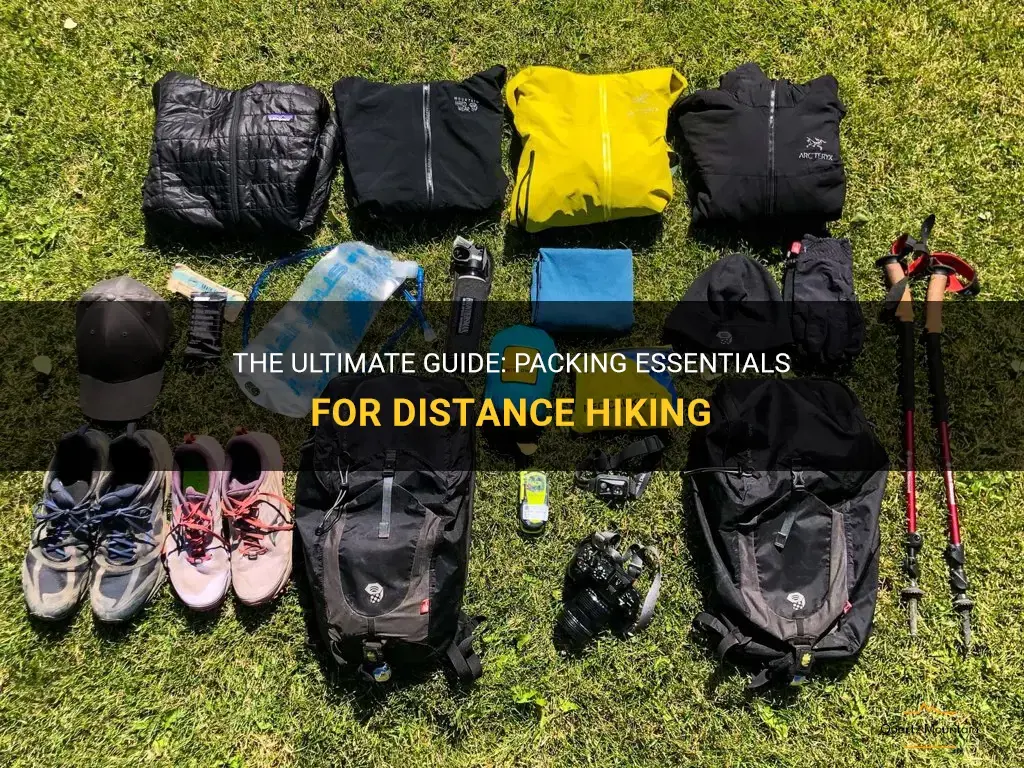
Planning to go on a distance hiking adventure? Whether you are embarking on a thru-hike of the Appalachian Trail or simply going on a multi-day trek through the wilderness, it's crucial to have the right gear and supplies packed to ensure a safe and successful journey. In this ultimate guide, we will cover all the packing essentials you need for distance hiking, from clothing and footwear to camping equipment and navigation tools. Get ready to hit the trail prepared and enjoy every moment of your epic hiking adventure!
What You'll Learn
- What are the essential items to pack for a long-distance hiking trip?
- How do you determine the appropriate amount of food and water to bring on a distance hike?
- Are there any specific clothing or footwear recommendations for long-distance hiking?
- What types of toiletries or personal care items should be included in a distance hiking pack?
- Are there any specific safety or emergency supplies that should be included when packing for a long-distance hike?

What are the essential items to pack for a long-distance hiking trip?
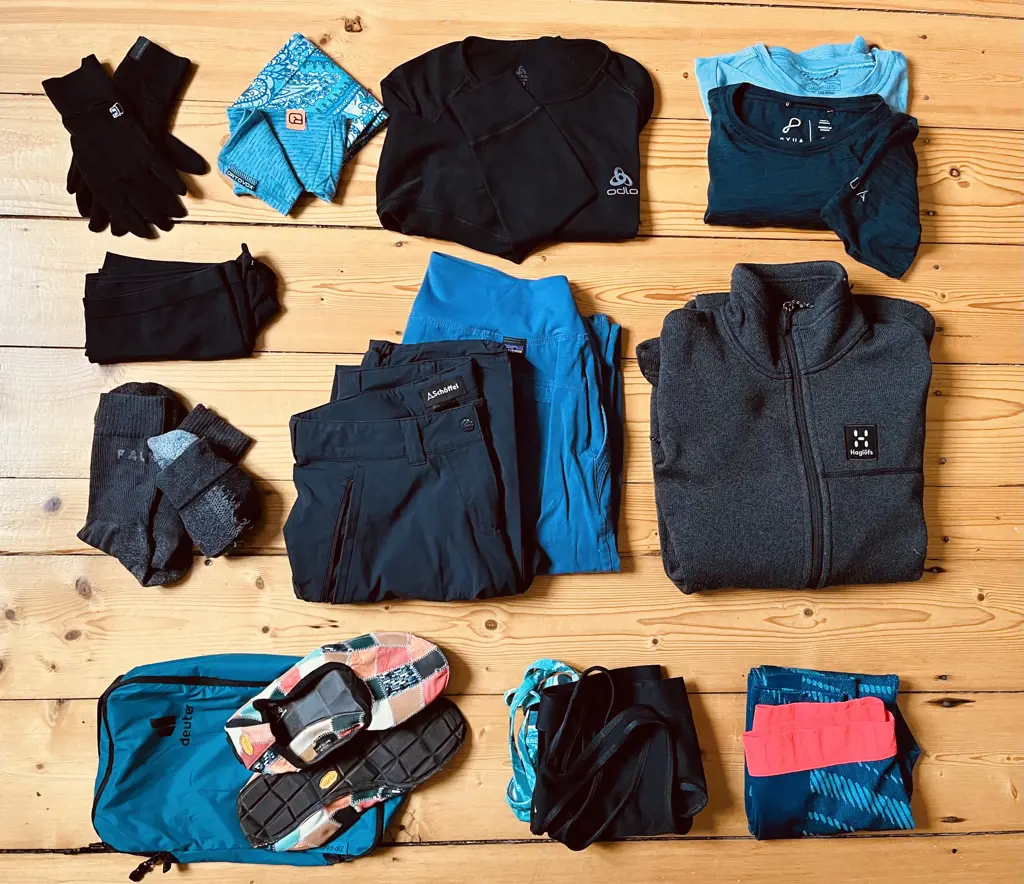
When embarking on a long-distance hiking trip, it is crucial to pack the right items to ensure a safe and successful journey. Here are some essential items to consider including in your packing list:
- Backpack: A sturdy and comfortable backpack is essential for carrying all your gear. Look for one with adjustable straps and a supportive frame to distribute the weight evenly.
- Navigation Tools: A compass and a topographic map of the area are indispensable for finding your way in unfamiliar terrain. Additionally, a GPS device or smartphone with a hiking navigation app can provide backup navigation support.
- Water Filtration System: Clean drinking water is crucial for staying hydrated on the trail. A water filtration system, such as a portable water filter or water purification tablets, ensures access to safe drinking water from natural sources like rivers or streams.
- Shelter: Depending on the length of your trip and the expected weather conditions, you may need a tent, tarp, or bivy sack for shelter. Choose a lightweight option that provides adequate protection against rain, wind, and insects.
- Sleeping Bag and Sleeping Pad: To stay warm and comfortable while sleeping outdoors, invest in a high-quality sleeping bag that suits the temperature range of your trip. Additionally, a sleeping pad provides insulation from the ground and enhances overall comfort.
- Clothing: Dressing in layers is key when hiking in varying weather conditions. Pack moisture-wicking base layers, insulating mid-layers, and waterproof and breathable outer layers. Don't forget extra socks, a hat, and gloves to protect against cold and wet conditions.
- Food and Cooking Gear: Plan your meals and pack lightweight and nutritious options like dehydrated meals, energy bars, and trail mix. A compact stove, cooking pot, and utensils are essential for preparing hot meals on the trail.
- Lighting: A headlamp or flashlight is essential for navigating in the dark or low-light conditions. Choose one with long battery life and adjustable brightness settings for extended use.
- First Aid Kit: Accidents can happen, so it's essential to carry a well-stocked first aid kit. Include items like bandages, antiseptic ointment, pain relievers, blister treatment, and any personal medications you may need.
- Multi-Tool: A versatile multi-tool comes in handy for various tasks on the trail, from repairing gear to opening cans. Look for one with a knife, pliers, screwdrivers, and other essential tools.
- Emergency Communication Device: While hiking in remote areas, it's a good idea to have a reliable way to communicate in case of an emergency. Consider carrying a personal locator beacon (PLB), a two-way satellite messenger, or a reliable cell phone with an extended battery.
- Personal Hygiene Items: Don't neglect personal hygiene on the trail. Pack essential items like biodegradable soap, hand sanitizer, toilet paper, and a trowel for proper waste disposal.
Remember to pack your gear strategically, distributing the weight evenly between your backpack's compartments. Practice packing and unpacking in advance to ensure everything fits properly and is easily accessible when needed. Additionally, consider the weight of each item and opt for lightweight and compact gear whenever possible to minimize strain on your body during the hike.
By packing these essential items, you'll be well-prepared for your long-distance hiking trip and enjoy a safer and more comfortable experience on the trail.
Creative Uses for Packing Peanuts: Practical and Fun Ideas for Repurposing Packaging Materials
You may want to see also

How do you determine the appropriate amount of food and water to bring on a distance hike?
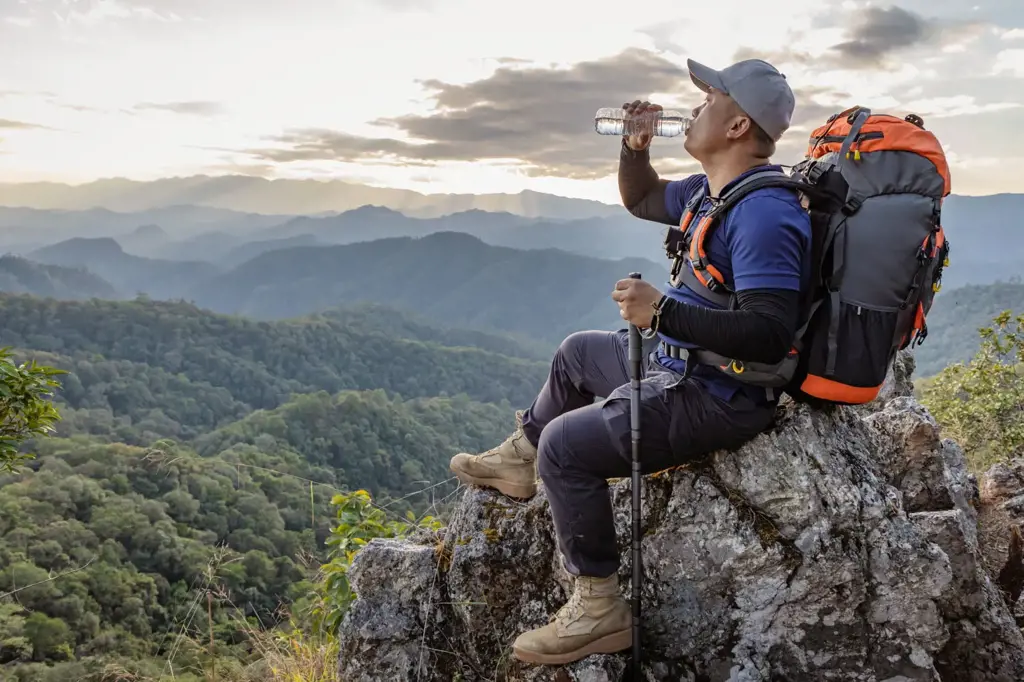
When embarking on a distance hike, it is crucial to determine the appropriate amount of food and water to bring along. Properly estimating these resources will ensure you have enough sustenance to fuel your body and stay hydrated throughout the journey. In this article, we will discuss the factors to consider and steps to follow in determining the right amount of food and water for a distance hike.
Assess the duration and intensity of the hike:
The length and difficulty of the hike are essential factors when determining the amount of food and water to carry. A shorter hike may require less food and water compared to a multi-day trek. Additionally, a more strenuous hike with challenging terrain and elevation gain will demand higher energy expenditure and fluid needs.
Consider your individual needs:
Every hiker has unique requirements when it comes to nutrition and hydration. Factors such as age, weight, gender, fitness level, and metabolism can influence the amount of food and water needed. It is essential to understand your body's specific needs and tailor your supplies accordingly.
Calculate your calorie needs:
When determining food requirements, it is essential to consider the number of calories you burn during the hike. On average, a person burns around 400-600 calories per hour during a moderate hike. Multiply this value by the estimated duration of your hike to get a rough estimate of the calories you will need to consume. For example, a 10-hour hike at 500 calories per hour would require 5000 calories in total.
Plan balanced meals:
Aim to create meals that supply a balanced combination of macronutrients (carbohydrates, proteins, and fats), as well as essential vitamins and minerals. Carbohydrates are the primary source of energy for hiking, so choose foods like nuts, dried fruits, energy bars, and whole grains. Protein-rich foods such as jerky or dried beans can help repair muscles, while healthy fats from nuts or avocados provide sustained energy.
Consider weight and packability:
While it is important to carry enough food, it is equally crucial to keep your backpack weight manageable. Opt for lightweight, compact foods that offer high nutritional value. Dehydrated meals, energy bars, trail mix, and freeze-dried fruits are excellent choices as they are lightweight, easy to pack, and provide essential nutrients.
Estimate water requirements:
Hydration is crucial during a hike to maintain body functions and prevent dehydration. A general rule of thumb is to consume around 0.5 to 1 liter of water per hour of hiking, depending on environmental conditions and personal factors. Consider the availability of water sources along your route and plan accordingly. Bring a water filtration system or purification tablets to ensure access to safe drinking water from natural sources.
Plan for emergencies:
In addition to estimating your food and water needs for the planned duration of the hike, it is important to be prepared for unforeseen circumstances or emergencies. Pack some extra food and water that can sustain you for an extra day or two in case of delays or unexpected events.
Remember that these guidelines are general and may vary based on individual factors and specific hiking conditions. It is always better to err on the side of caution by bringing extra supplies rather than risking inadequate nourishment and dehydration. Practice your food and water plans on shorter hikes to fine-tune your estimations and ensure you are well-prepared for your distance hike.
Essential Tips for Efficient Packing for a Flight
You may want to see also

Are there any specific clothing or footwear recommendations for long-distance hiking?
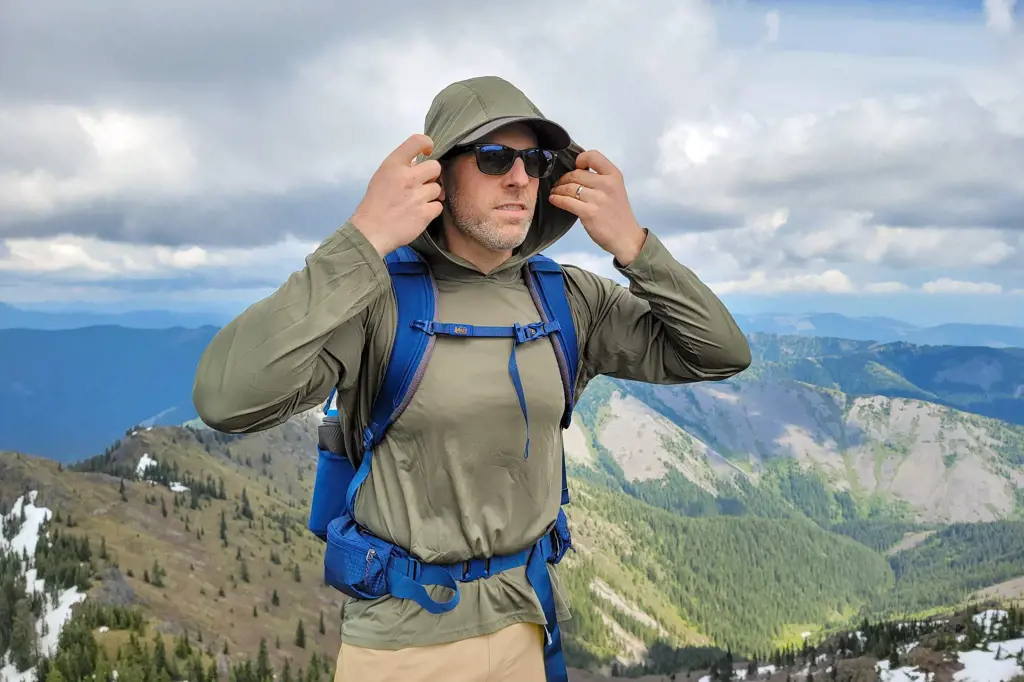
When it comes to long-distance hiking, having the right clothing and footwear is crucial for a successful and enjoyable journey. The demands of hiking for long durations can take a toll on your body, so it's essential to invest in gear that provides comfort, protection, and durability.
Clothing:
- Base Layers: Start with moisture-wicking base layers that help regulate your body temperature and keep you dry. Look for materials like merino wool or synthetic fabrics that dry quickly and prevent odors.
- Mid Layers: Layering is essential for temperature control. Choose insulating mid-layers like fleece or down jackets to keep you warm in colder conditions.
- Outer Layers: Invest in a waterproof and breathable shell jacket and pants to protect yourself from rain, wind, and snow. Look for lightweight options that are packable, so you can easily carry them when not in use.
- Pants: Opt for lightweight, moisture-wicking, and quick-drying pants. Convertible pants that can transform into shorts are a great option to adapt to changing weather conditions.
- Socks: Choose moisture-wicking socks made from merino wool or synthetic fabrics. Consider wearing liner socks under your hiking socks for added comfort and to prevent blisters.
Footwear:
- Hiking Boots: Invest in a pair of high-quality, waterproof hiking boots that provide ankle support and have a sturdy sole. Make sure they are well-fitted and broken-in before embarking on a long-distance hike.
- Trail Runners: Many long-distance hikers prefer lightweight trail running shoes over traditional hiking boots. They offer more flexibility and allow for faster-paced hikes. However, these are not suitable for rough and rocky terrains, so choose accordingly.
- Gaiters: Gaiters are fabric coverings worn over your boots and pants to protect you from debris, water, and snow. They are especially useful in muddy or snowy conditions.
Other Considerations:
- Hat: Wear a hat to protect your face and neck from the sun and to keep you warm in colder weather. Look for hats with wide brims and breathable materials.
- Gloves: Carry lightweight gloves to protect your hands from cold temperatures, wind, and sunburn.
- Sunglasses: Invest in a pair of polarized sunglasses to protect your eyes from harmful UV rays and glare from snow or water.
- Backpack: Choose a comfortable and well-fitted backpack with enough space to carry all your gear and essentials. Make sure it has a supportive hip belt for weight distribution.
- Compression Gear: Consider wearing compression socks or sleeves to improve blood circulation and reduce muscle fatigue during long hikes.
Remember to always test your clothing and footwear before embarking on a long-distance hike. Wear them on shorter hikes or trial runs to ensure they fit well and provide the comfort and protection you need. By investing in high-quality gear that suits your specific needs, you can have a more enjoyable and successful long-distance hike.
Essential Items to Pack for BYU-Hale
You may want to see also

What types of toiletries or personal care items should be included in a distance hiking pack?
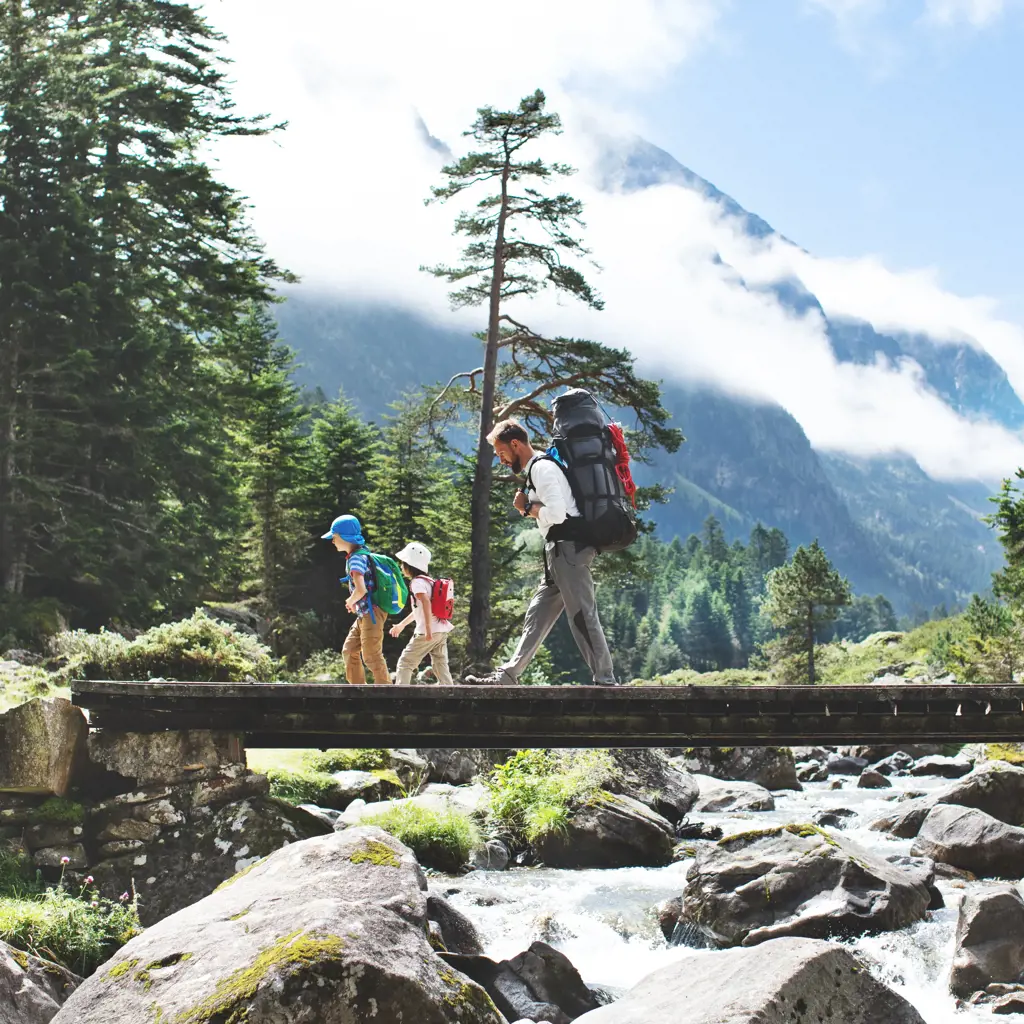
When preparing for a distance hike, it's crucial to pack the right toiletries and personal care items to ensure your comfort, hygiene, and well-being on the trail. Here are some essential items that should be included in your hiking pack:
- Biodegradable Soap: Opt for a biodegradable soap to minimize your impact on the environment. This soap can be used for washing your hands, body, and dishes when needed. Look for a soap that is free from harmful chemicals and safe for outdoor use.
- Toothbrush and Toothpaste: Maintaining oral hygiene is important even when you're hiking. Pack a lightweight toothbrush and a small tube of toothpaste to keep your teeth clean and prevent dental issues.
- Sunscreen: Protecting your skin from harmful UV rays is crucial when spending extended periods outdoors. Choose a broad-spectrum sunscreen with a high SPF factor to shield your skin from the sun's rays. Apply it generously and frequently, especially if you're hiking in high altitudes or on snow-covered terrain.
- Lip Balm: Lips often get dry and chapped during hiking due to exposure to wind and sun. Carry a lip balm with SPF to protect your lips and keep them moisturized. Look for a lip balm that is lightweight and easily fits into your pocket.
- Hand Sanitizer: Keeping your hands clean is essential to prevent the spread of germs and protect yourself from illnesses. Carry a travel-sized bottle of hand sanitizer that contains at least 60% alcohol. Use it before meals, after using the restroom, and anytime you feel the need to clean your hands.
- Wet Wipes: In situations where water is scarce or unavailable, wet wipes can come in handy for cleaning your hands, face, and even refreshing your body. Look for biodegradable wipes that are gentle on your skin and won't harm the environment.
- Toilet Paper: When hiking in remote areas, it's unlikely to find toilet paper readily available. Always carry a small roll of toilet paper in a waterproof bag or a dedicated toilet paper holder to ensure you're prepared for nature's call.
- Menstrual Products: If you're a menstruating person, be sure to carry an ample supply of your preferred menstrual products, such as pads, tampons, or a menstrual cup. Pack them in a waterproof bag to keep them clean and separate from the rest of your gear.
- Insect Repellent: Depending on the location and season, you might encounter pesky insects and bugs during your hike. Protect yourself from mosquito bites and other insect-related annoyances by packing a reliable insect repellent.
- Prescription Medications: If you're on any prescription medications, don't forget to pack an adequate supply for the duration of your hike. It's also a good idea to bring a small first aid kit with basic supplies for managing minor cuts, blisters, and insect bites.
Remember, when packing toiletries and personal care items for a distance hike, prioritize lightweight options and consider the duration of your trip. Always be mindful of Leave No Trace principles by packing biodegradable and eco-friendly products, disposing of waste properly, and respecting nature.
Essential Items for a September Trip to Greece: What to Pack
You may want to see also

Are there any specific safety or emergency supplies that should be included when packing for a long-distance hike?
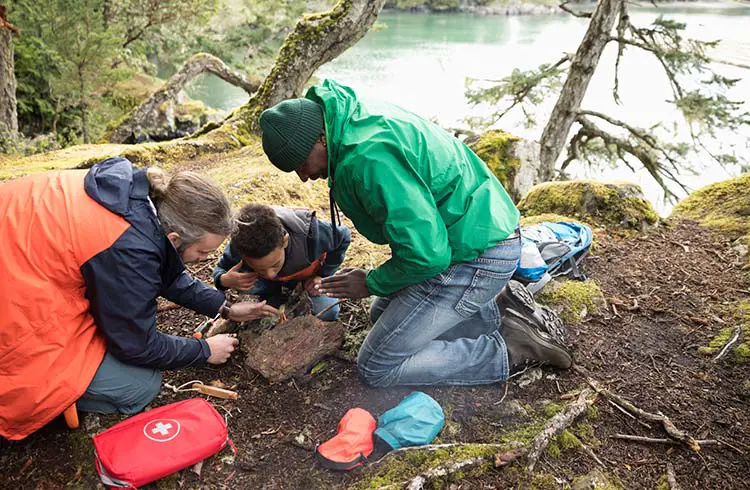
When embarking on a long-distance hike, it is crucial to pack the necessary safety and emergency supplies to ensure a safe and enjoyable journey. These supplies can help you handle unexpected situations and provide valuable assistance when needed. Whether you're hiking through remote wilderness areas or popular trails, it is essential to be prepared for any eventuality. Here are some specific safety and emergency supplies that should be included when packing for a long-distance hike.
First Aid Kit:
A well-stocked first aid kit is a must-have for any hiking trip. It should contain items such as adhesive bandages, antiseptic wipes, gauze pads, medical tape, tweezers, scissors, pain relievers, and any personal medications you may need. Familiarize yourself with the contents of the kit and how to use them properly.
Emergency Shelter:
Even if you're planning to hike in mild weather conditions, it is crucial to pack an emergency shelter such as a lightweight tent or a bivy sack. In case you get lost or injured and need to wait for rescue, having a shelter can provide much-needed protection from the elements.
Navigation Tools:
Carrying a map and a compass, along with the knowledge of how to use them, is essential for long-distance hikes. It is also helpful to have a GPS device as a backup to ensure you stay on the right track. Additionally, marking your route with trail markers or ribbons can help prevent getting lost.
Communication Devices:
Bringing a fully charged cell phone with a backup battery pack is recommended when hiking long distances. It can be a lifeline in case of emergencies or when you need to call for help. Consider investing in a satellite communication device or a personal locator beacon (PLB) for added safety.
Water Purification System:
Access to safe drinking water is crucial during a long-distance hike. Carrying a water purification system such as water treatment tablets, a portable water filter, or a UV water purifier ensures you can make any water source safe to drink without the risk of waterborne illnesses.
Extra Food and Snacks:
Packing extra food and snacks is important in case you get lost or experience delays on the trail. Choose lightweight, high-energy foods that are easy to carry and provide ample nutrition. Granola bars, trail mix, energy gels, and dehydrated meals are popular choices among hikers.
Lighting:
Having a reliable source of light is crucial, especially if you plan to hike after dark or in low-light conditions. Carry a headlamp or a flashlight with extra batteries. This will help you navigate the trail, set up camp, and signal for help if needed.
Fire-starting Equipment:
In an emergency situation, having the means to start a fire can be invaluable. Bring waterproof matches, a lighter, or a fire starter kit. These items can help keep you warm, dry your gear, and provide a source of light.
Personal Protection:
Depending on the region and the time of year, it is important to pack personal protection gear such as sunscreen, insect repellent, and a whistle. Sunscreen protects your skin from harmful UV rays, insect repellent keeps bugs at bay, and a whistle can help attract attention and signal for help.
Emergency Contact Information:
Always carry a list of emergency contact information, including the nearest park ranger station, local emergency services, and any important personal contacts. Ensure that someone who is not on the hike knows about your plans, itinerary, and estimated return date.
It's essential to remember that the specific safety and emergency supplies you need for a long-distance hike may vary depending on factors such as the location, weather conditions, and duration of your trip. Researching the area, consulting experienced hikers, and considering the advice of park rangers can help you tailor your packing list to your specific needs. Always prioritize safety and preparedness when embarking on a long-distance hike to ensure a safe and enjoyable journey.
Essential Items to Pack for a Fun Day at the Pool
You may want to see also
Frequently asked questions
When packing for a long-distance hike, it is important to prioritize lightweight and versatile gear. Some essential items to pack include a tent or shelter, sleeping bag, sleeping pad, cooking stove and fuel, water filtration system, clothing layers for various weather conditions, a navigation device or map, a first aid kit, a headlamp or flashlight, trekking poles, and lightweight food.
It is important to pack clothing that is suitable for various weather conditions. Layering is key, as it allows you to adjust your clothing based on the temperature and your activity level. Pack moisture-wicking base layers, such as synthetic or merino wool shirts and underwear, to help regulate body temperature and stay dry. Depending on the expected weather, bring a lightweight and waterproof jacket, a warm insulating layer, hiking pants or shorts, and sturdy hiking boots or trail running shoes. Don't forget to pack extra socks and a hat to protect yourself from the sun.
The amount of food and water you should pack will depend on the length and difficulty of your hike, as well as your personal needs and preferences. As a general guideline, plan to consume around 2 pounds (0.9 kilograms) of food per day. Choose lightweight, non-perishable options that provide a good balance of carbohydrates, protein, and fats for sustained energy. In terms of water, it is recommended to carry at least 2 liters per day, but this can vary depending on the availability of water sources along your route. Consider using a water filtration system to purify water from natural sources to reduce the weight you need to carry.
Safety should always be a top priority when distance hiking. In addition to a first aid kit, consider packing items such as a lightweight emergency shelter, a whistle to attract attention in case of an emergency, fire-starting tools, a multi-tool or pocket knife, a signal mirror, and a compass or GPS device for navigation. It is also essential to research and understand the potential hazards of the trail you will be hiking and adjust your safety gear accordingly, such as carrying bear spray or wearing proper sun protection.







